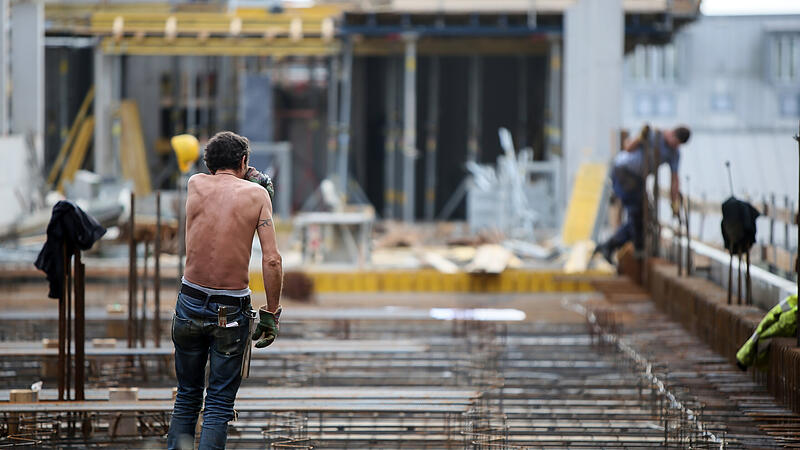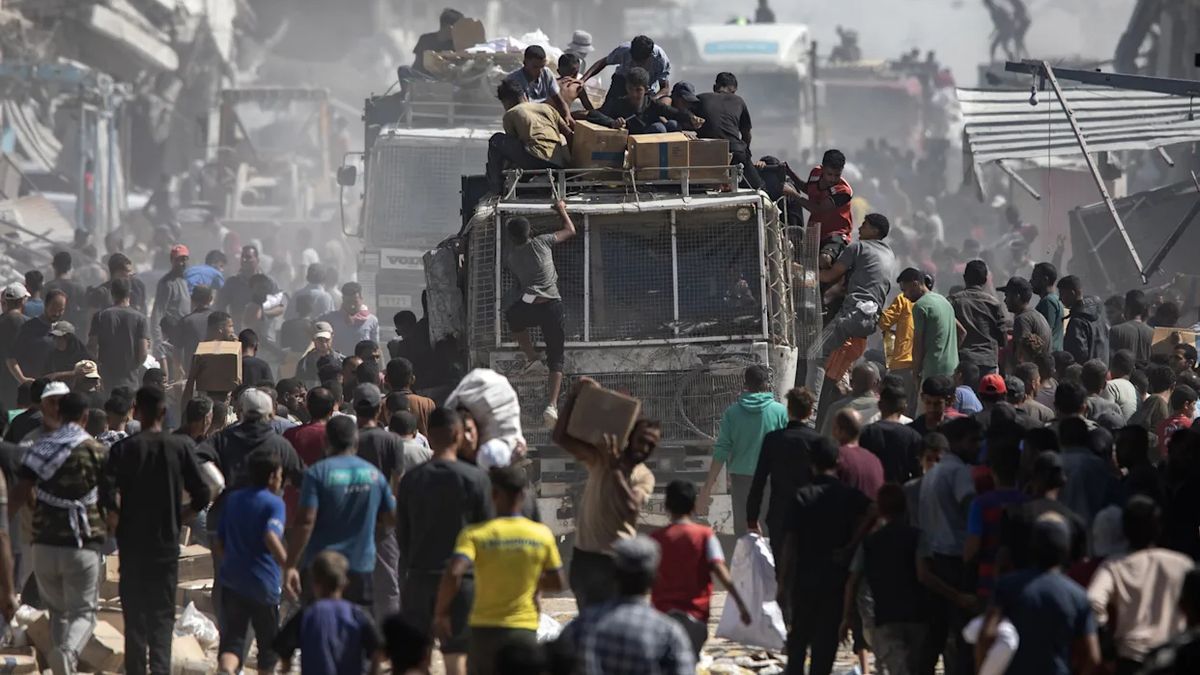Image: VOLKER WEIHBOLD
In addition to the higher workload, circulatory problems, heat strokes and collapse, they are also exposed to long-term consequences such as mild skin cancer, an alliance of the Chamber of Labor (AK), the Bau-Holz union (GBH), Fridays for Future and System Change not Climate Change drew attention to the problem.
If the legislature does not respond quickly, the alliance will take appropriate measures to put pressure on it. According to the European Union’s Earth observation program Copernicus, the summer of 2023 was the hottest since records began. A legal adjustment to the new conditions is therefore needed, said AK President Renate Anderl, according to press documents.
Construction workers most affected
The construction workers were hit hardest by the hot days. On roofs or in construction pits, the temperature in the sun rises to up to 50 degrees Celsius. This not only leads to health consequences, it also increases the risk of accidents at work, according to Allianz. It is only possible to stop work when the temperature reaches 32.5 degrees in the shade – but there is no legal right.
If employers grant heat-free leave, employees receive continued wage payment of 60 percent, which is covered by the construction workers’ holiday and severance payment fund. However, in the summer, only a quarter of the construction workers, 23,875 employees from 1,158 companies, benefited from this regulation, the alliance said.
“Will block construction sites”
“While in Vienna the horse-drawn carriages are rightly granted heat-free time, construction workers have to continue working at 35 degrees if the company insists on it. How long do politicians want to look at this?” asked Josef Muchitsch, federal chairman of the Bau-Holz union . Since voluntary heat regulation doesn’t work, people are forced to act: “If nothing is done for the construction workers by next summer and the federal government doesn’t get climate-friendly labor laws in place, we as a union will work together with the activists “Block those construction sites within the climate movement that continue to toil despite dangerous heat,” Muchitsch threatened.
The alliance therefore called for a reform of labor law, the prevention of non-melanoma skin cancer and its recognition as an occupational disease. From 25 degrees onwards, employers should be obliged to take measures to prevent a further rise in temperature. Heat-free from 30 degrees or a surcharge for outdoor work as well as investments in climate-friendly infrastructure.
In addition, the alliance called for appropriate climate protection measures such as the thermal renovation of public buildings. “This summer has once again shown that many developers are pushing ahead with their projects without considering losses,” noted Lucia Steinwender from System Change not Climate Change. “Many companies are as unconcerned about the fact that their employees are doing hard physical labor in the sweltering heat as they are about the climate crisis, which they often fuel with their construction projects.”
“In Vienna alone, a third of emissions are caused in the building sector,” said Teresa Tausch from Fridays for Future Austria. “In order to be able to meet the climate targets, the public sector must therefore urgently address the thermal renovation of public buildings.” According to an AK study, around 29.3 billion euros would have to be invested in the buildings alone by 2030.
My themes
For your saved topics were
new articles found.

info By clicking on the icon you can add the keyword to your topics.
info
By clicking on the icon you open your “my topics” page. They have of 15 keywords saved and would have to remove keywords.
info By clicking on the icon you can remove the keyword from your topics.
Add the topic to your topics.
Source: Nachrichten




